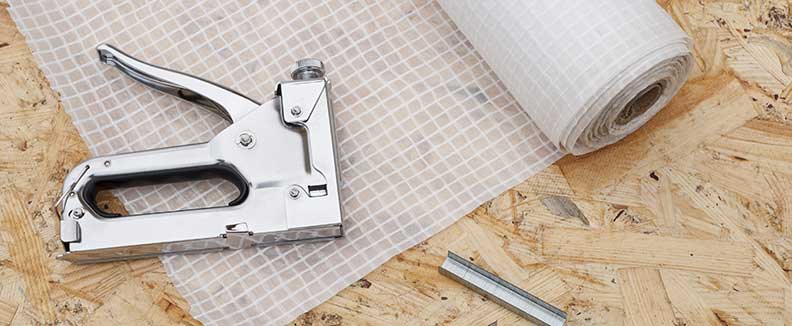Vapor Barrier Repair and Replacement
Vapor barrier installation is an essential component of any well-built home. The barrier’s purpose is to resist the movement of moisture into spaces where it would cause damage.
Guidelines for proper vapor barrier installation include the attaching of thick polyethylene material to the framing, overlapping seams by six inches or more and carefully taping all seams. A moisture-proof tape is used in installation as well as vapor barrier repair.
Where Vapor Barrier Installation is Needed
Vapor barriers are installed where excessive moisture is prevalent. Inside the home, this might be in a bathroom, kitchen or laundry where hot water creates steam and vapor. The barriers prevent moisture from penetrating into the wall cavity where it can cause mold and rot as well as reduce the effectiveness of the insulation.
At times, vapor barriers are also installed to keep moisture from outside the home or from a crawlspace from getting into the living space. They are common in levels partially or fully below grade. Barriers are typically attached to the underside of mobile homes and other buildings that are exposed to bare earth.
Vapor Barrier Repair: DIY or Professional
Where vapor barriers are visible, they should be inspected at least annually for loose plastic, failing tape or damage of any kind.
With a good understanding of how it is done, a homeowner might successfully make the vapor barrier repair using a patch larger than the hole in the barrier and securely taped. When there is any doubt about the process, the better choice is to call a professional who will have the right materials and techniques to restore a moisture-free barrier that will protect the home and keep the living space free from the negative impact of mold and mildew.
Vapor Barrier Replacement
There are times when, due to age or damage, vapor barrier replacement is the only option. In most cases, replacing a vapor barrier should be handled by an experienced professional.
During the vapor barrier replacement or repair process, the area to be covered by the barrier should be carefully inspected. Any moisture damage should be repaired, mold should be remediated and wet insulation should be replaced before the new vapor barrier is installed. If there is a source of excess moisture, such as a foundation crack or poorly sealed duct work, it should be repaired to prevent the return of the problems.
